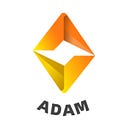ADAM proposes one of the exploration directions of the on-chain data confirmation model — digital collections
Even in the midst of a prolonged bear market, digital collections are a surprisingly ground-breaking use case in the crypto industry, enabling millions of new users to join the wave of cryptocurrency and Web 3.0 developments. In the real world, many natural products are unique, with different properties and values, and the characteristics of digital collections make on-chain data a perfect fit for this situation.

The blockchain technology has realized the mapping of currency in the digital world, resulting in a series of NFTs’ booming, creating a wave of investment in cryptocurrencies in recent years. The emergence of NFT allows us to see the possibility of mapping the entire real world. It uses the characteristics of blockchain to be non-tamperable, open, transparent, and traceable to tokenize different objects in the digital world. Digital collections and NFTs belong to different applications with the same root and the same origin. The core difference is that digital collections pay more attention to the function of data right confirmation, which is also the direction that ADAM should focus on exploring.
Simply put, the representation of digital collections is a set of metadata on the blockchain, and this set of metadata is time stamped. Each set of metadata points to a specific, unique and immutable digital content stored on the network, which is displayed as a string of specific URL links or a set of hash values. In the blockchain, digital collections are released through smart contracts, so that people can know the issuer of specific digital content, the time of issuance, and the information of each circulation. Based on the fact that the digital content pointed to by each digital collection is fixed and unique, the digital collection is unique, non-interchangeable, indivisible, and traceable.
The underlying logic of the establishment of digital collections is based on distributed ledgers, and its transactions rely on peer-to-peer networks. If the distributed ledger of blockchain is regarded as a special type of database, the actual digital collections in this database The storage status quo is a little more complicated. The entire ecological closed loop of digital collections mainly includes the following scenarios.
Digitization: The creator of the digital collection will check that the files, titles, description sentences are completely accurate, and then convert the metadata of the digital collection into the appropriate format.
Storage: Creators of digital collections can choose two ways to store metadata on-chain and off-chain. On-chain storage costs are high and traffic is congested, but metadata will exist permanently with the token. Off-chain storage restrictions are small but theoretically There is a risk of metadata loss.
Signature: The digital collection creator signs the information including the digital collection data hash and sends it to the smart contract.
Digital Collection Confirmation: Once the transaction information is confirmed on-chain, the minting process of the digital collection is complete, and the minted digital collection will be permanently linked to a unique blockchain address to prove its existence.
According to the mainstream solutions in the industry, there are still some security risks in casting digital collections. Due to current technical bottlenecks, on-chain congestion, limited scalability and high gas costs, the metadata and media data of digital collections are not It is not completely stored on the chain, but chooses to store it off-chain, losing the protection of blockchain technology, and this part of the data is not completely safe and reliable. However, ADAM is based on its own data encryption computing network, with globalized nodes, distributed data source bases and efficient data processing capabilities, which can effectively ensure the security of digital collection metadata.
At present, the mainstream solutions for off-chain storage are centralized data storage, IPFS and decentralized cloud storage, etc., while ADAM is different. It not only encrypts the transmission of data, but also fundamentally changes the mode of data storage. ADAM saves storage space by encoding data and compressing files into an efficient format. When confirming the title of a digital collection, it is actually confirming the hash value signed by its creator. Others can copy the metadata, but they cannot prove their ownership. That’s why it has been suggested that digital collections are actually data, not the images themselves.
